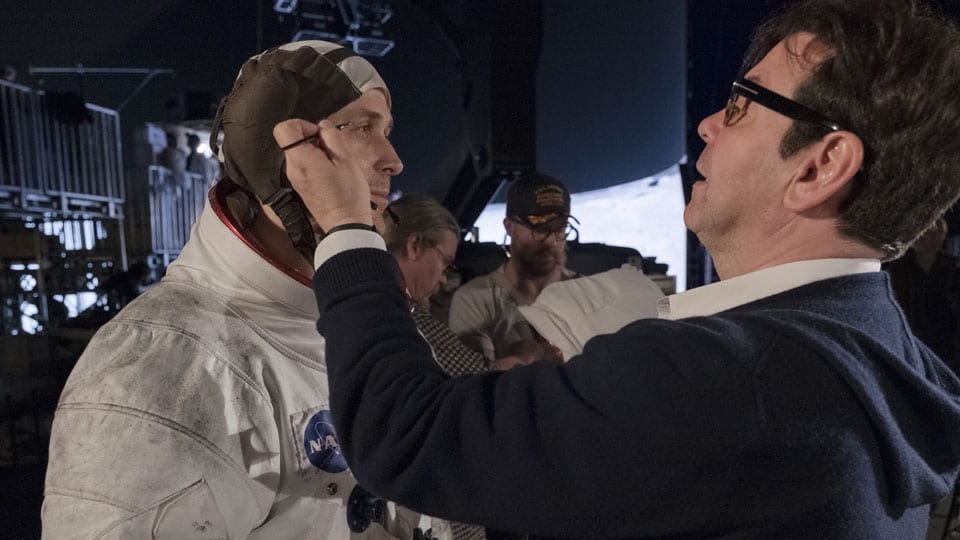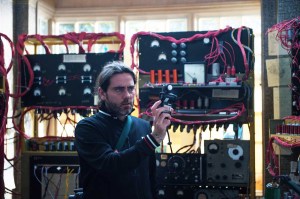
The Imitation Game tells the little-known story of Englishman Alan Turing, the mathematics genius and computer pioneer, who was instrumental in breaking the Nazi’s secret Enigma Code that helped the Allies win World War II. The story stretches over three decades, from the 1930s to the early 1950s, but most of it takes place during the war years when Turing and his team toiled at Bletchly Park outside London, the clandestine center for the country’s code-breaking operations.
Morten Tyldum, director of The Imitation Game, “wanted to avoid the clichéd muddy color palette of WWII movies,” said Oscar Faura, the film’s cinematographer. “We were telling a story based on actual events but we wanted the movie to be more poetic. It was a matter of enhancing some visual elements to make it more suggestive without becoming too stylized.” Richer colors were injected into film by the costumes designed by Sammy Sheldon and Maria Djurkovic’s production design.
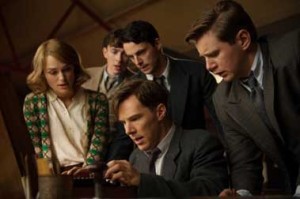
For his part, the director of photography decided to vary the looks within the overall span of the film’s narrative. “The movie’s structure is not linear. It jumps back and forth between the 1930s, 1940s and 1950s, three quite different periods in Alan Turing’s life,” he observed. “Our goal was to give to the three different time periods distinctive appearances but without being too obvious.” The scenes in Manchester in the 1950s when Turing, portrayed by Benedict Cumberbatch, is being hounded by the police because he is a homosexual, “were meant to look gray, rainy and sad, so we wet down the streets and used artificial rain and desaturated some colors during postproduction color grading.” For Turing’s school years, when he’s a teenager, the DP wanted to make them look brighter and cleaner. “I tried very hard to shoot under the direct sun to make the Sherborne school scenes more evocative and positive,” he said.
Maybe the toughest lighting task was handling the historic blackouts that were a fact of life in England during WWII. The reason was to prevent German bombers from reaching their targets during their night raids. “As we wanted to be faithful to this, I found that for night exterior scenes my choices were very limited—windows were covered, street lamps were off and even cars had to travel with their lights covered by snoots,” said Faura.
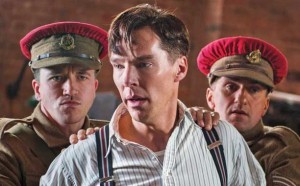 During one blackout scene, Turing is riding his bike across the town of Bletchley and he looks into the window of the home Joan Clarke, one of his co-workers, played by Keira Knightley, which is lit only by candles. “It was a delicate exercise in terms of photography,” he noted. “Obviously, candles were not enough to light the scene for the camera so we managed to hide tiny halogen bulbs behind the candles for the background and Chinese lanterns, bigger and softer, to light the actors’ faces. We applied a subtle flicker effect to the light sources to get the candle effect.” For other nocturnal sequences, Faura simulated overhead moonlight by using lights lifted on a crane.
During one blackout scene, Turing is riding his bike across the town of Bletchley and he looks into the window of the home Joan Clarke, one of his co-workers, played by Keira Knightley, which is lit only by candles. “It was a delicate exercise in terms of photography,” he noted. “Obviously, candles were not enough to light the scene for the camera so we managed to hide tiny halogen bulbs behind the candles for the background and Chinese lanterns, bigger and softer, to light the actors’ faces. We applied a subtle flicker effect to the light sources to get the candle effect.” For other nocturnal sequences, Faura simulated overhead moonlight by using lights lifted on a crane.
Much of the movie takes place within the small confines of one of the huts at Bletchley where Turing and his team of codebreakers work. “The decrypting process had to happen in those huts,” said the DP. “To avoid ending up making a claustrophobic movie we tried to shoot the rest of the film in locations as spacious as we could get. We were conscious that at some moments the movie needed to breath.” One example: the Admiralty records center, where a detective gets Turing’s classified file, would have in fact been only a tiny office. “Instead of that we decided to shoot at the Royal Courts of Justice in London, an impressive Victorian building,” said Faura.
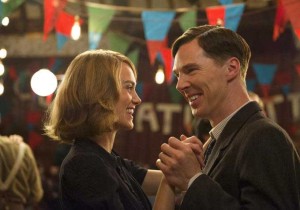 Faura used camera motion sparingly. “Our rule of thumb was using camera movement only when it was required, and sometimes we used a combination of different styles to get one mood,” he said. One example: At the beginning of the movie there’s a scene which depicts how one ciphered message travels from Turing’s house to MI6, headquarters for British intelligence. “The camera is continuously in movement as the message advances,” he noted. “The same happens when we are back in the 1940s and an encrypted Nazi message travels from a Radio Interception Room to the code breaker’s room at Bletchley Park, while a bunch of U-boats are attacking a battle cruiser. It’s pretty dynamic.”
Faura used camera motion sparingly. “Our rule of thumb was using camera movement only when it was required, and sometimes we used a combination of different styles to get one mood,” he said. One example: At the beginning of the movie there’s a scene which depicts how one ciphered message travels from Turing’s house to MI6, headquarters for British intelligence. “The camera is continuously in movement as the message advances,” he noted. “The same happens when we are back in the 1940s and an encrypted Nazi message travels from a Radio Interception Room to the code breaker’s room at Bletchley Park, while a bunch of U-boats are attacking a battle cruiser. It’s pretty dynamic.”
There are also plenty of static conversation scenes. “You can move the audience by an emphatic camera movement at some specific moment in a dialog scene if you remain static before that for a certain period of time,” he observed. “An overdose kills the effect.”
The Spanish cinematographer, working for the first time with Swedish director Tyldum, known for his cult hit Headhunters, decided to shoot on film. “It was a matter of texture, the digital capture is too clean, especially for a period film,” Faura explained. “We felt that there was something inherent in the film quality that was helpful to tell the story.” He used Kodak film stock and decided to go Super 35 mm with spherical lenses. He used two ARRI cameras, mainly shooting with one, but employing both for the dialog scenes. Lenses were ARRI Master Primes.
Faura, who has been a cinematographer in the Spanish film industry since 1999, is best known for two movies he shot for director J.A. Bayona – The Orphanage and The Impossible, a movie about the deadly tsunami that hit Thailand a decade ago, starring Naomi Watts and Ewan MacGregor. His highly regarded work on The Impossible was what attracted Tyldum to the director of photography. Other directors Faura has worked with include Alejandro Amenábar, and Alejandro González Iñárritu. He was nominated for the European Film Award for The Orphanage, a moody supernatural mystery. He is teaming again with Bayona on childhood fantasy A Monster Calls, starring Liam Neeson.




